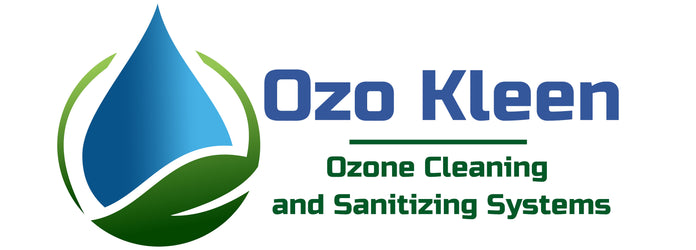The history of ozone and authorization for use in the food and beverage industry:
1957 - Ozone in the gaseous form was approved for the storage of meat by the USDA.
March 12, 1975 - FDA recognized ozone treatment to be a Good Manufacturing Practice (GMP) for the bottled water industry. The minimum ozone treatment for GMP is "0.1 part per million (0.1 mg/l) of ozone in water solution in an enclosed systems for at least 5 minutes." Code 21 of Federal Regulations, Section 129.80 d.4 Federal Register 11566, 12 March 1975.
June 14, 1997 - A panel of experts from food science, ozone technology, and other related fields has declared Generally Recognized as Safe (GRAS) status for ozone use in food processing.
This panel of experts was requested by the Energy Power Research Institute (EPRI). It is well worth mentioning that the EPRI was very instrumental in achieving GRAS approval for the use of ozone in food applications. Read below an excerpt from the EPRI Global Handbook from 2004:
In 1999, recognizing that the 1982 ruling created confusion among the food processors, the FDA encouraged EPRI's FTA to pursue the development and submission of a Food Additive Petition (FAP) that would allow the use of ozone as a contact antimicrobial agent in food. Petitioners D.M. Graham of EPRI and R.G. Rice of RICE International Consulting Enterprises completed the FAP and submitted it to the FDA in August 2000. After an expedited and rigorous review by the FDA staff, the FDA recognized ozone as an antimicrobial agent suitable for use in Food Processing and Agricultural Production. Notice of this recognition appeared in the Federal Register, June 26, 2001.
Regulations
USDA final rule on ozone dated 12/17/2002, FSIS Directive 7120.1
Safe and suitable ingredients used in the production of meat and poultry
FSIS Directive 7120.1 States:
Ozone for use on all meat and poultry products.
Ozone can be used in accordance with current industry standards of good manufacturing practice. No other guidelines are given on levels or dosages of ozone.
Reference 21 CFR 173.368
USDA CFR 173.368
Ozone (CAS Reg. No. 10028-15-6) may be safely used in the treatment, storage, and processing of foods, including meat and poultry (unless such use is precluded by standards of identity in 9 CFR part 319), in accordance with the following prescribed conditions: (a) The additive is an unstable, colorless gas with a pungent, characteristic odor, which occurs freely in nature. It is produced commercially by passing electrical discharges or ionizing radiation through air or oxygen. (b) The additive is used as an antimicrobial agent as defined in CFR 170.3(o)(2) of this chapter. (c) The additive meets the specifications for ozone in the Food Chemicals Codex, 4th ed. (1996), p. 277, which is incorporated by reference. The Director of the Office of the Federal Register approves this incorporation by reference in accordance with 5 U.S.C. 552(a) and 1 CFR part 51. Copies are available from the National Academy Press, 2101 Constitution Ave. NW., Washington, DC 20055, or may be examined at the Office of Premarket Approval (HFS-200), Center for Food Safety and Applied Nutrition, Food and Drug Administration, 200 C St. SW., Washington, DC, and the Office of the Federal Register, 800 North Capitol St. NW., suite 700, Washington, DC. (d) The additive is used in contact with food, including meat and poultry (unless such use is precluded by standards of identity in 9 CFR part 319 or 9 CFR part 381, subpart P), in the gaseous or aqueous phase in accordance with current industry standards of good manufacturing practice. (e) When used on raw agricultural commodities, the use is consistent with section 201(q)(1)(B)(i) of the Federal Food, Drug, and Cosmetic Act (the act) and not applied for use under section 201(q)(1)(B)(i)(I), (q)(1)(B)(i)(II), or (q)(1)(B)(i)(III) of the act.
USDA Guidance on Ingredients and sources of radiation used to reduce microorganisms on carcasses, ground beef, and beef trimmings:
Ozone is classified a Secondary direct food additive/processing aid allowable for all meat and poultry products.
FDA Federal Register Vol. 66 No.123 June 26, 2001
The Food and Drug Administration (FDA) is amending the food additive regulations to provide for the safe use of ozone in gaseous and aqueous phases as an antimicrobial agent on food, including meat and poultry. This action is in response to a petition filed by the Electric Power Research Institute, Agriculture and Food Technology Alliance.
This rule is effective June 26, 2001.
The April 13, 1998 FDA Guide to Minimize Microbial Food Safety Hazards for Fresh Fruits and Vegetables, states that "Ozone treatment of wash and flume waters holds promise as a treatment to control microbial build-up, especially in recycled water."
However, with regard to chlorine: "Fruit and vegetable tissue components and other organic matter neutralize chlorine rendering it inactive against microorganisms."
